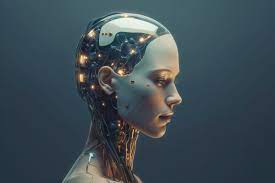AI stands for Artificial Intelligence and it is a technology that has been around for decades. It is used to create computer programs that can think and learn like humans do. AI has been used in many different industries, from healthcare to finance, and it has revolutionized the way we interact with machines.
AI is based on the idea of creating computer systems that can solve problems without being explicitly programmed to do so. This means that AI systems are able to learn from experience and make decisions based on what they have learned. They are also able to adapt quickly to changing conditions and can be used in many different applications.
One of the most common uses of AI is in robotics. Robots are machines designed to perform tasks that would normally require human intervention, such as manufacturing or assembly-line work. In recent years, robots have become increasingly sophisticated, with many now being able to operate autonomously with minimal human input. AI helps robots learn how to complete tasks more efficiently and accurately than ever before, making them invaluable in a wide range of industries.
AI is also being used in healthcare, where it can help diagnose illnesses more accurately than ever before. AI-powered medical imaging software can detect signs of disease much earlier than traditional methods, allowing doctors to intervene sooner and improve patient outcomes. Additionally, AI can be used in drug development by helping researchers identify potential new treatments faster than ever before.
Finally, AI is being used in finance and banking as well. Banks are using AI-powered algorithms to detect fraud more quickly and accurately than human analysts could ever hope to do manually. Additionally, banks are using AI-driven chatbots to provide customers with personalized assistance when they need it most. This helps banks reduce costs while providing customers with better service than ever before.
In conclusion, AI is revolutionizing the way we interact with machines by allowing them to think and learn like humans do. It is being used in a variety of industries from healthcare to finance, and its applications will only continue to expand as technology advances further into the future.
Understanding AI: Frequently Asked Questions Answered
What do you mean by AI’s?
When referring to “AI’s,” it can be interpreted as the possessive form of “AI,” which stands for Artificial Intelligence. In this context, “AI’s” would mean something that belongs to or relates to Artificial Intelligence. It could refer to the technologies, applications, or advancements within the field of AI. For example, one could say, “The AI’s capabilities have greatly improved in recent years,” meaning that the capabilities of Artificial Intelligence have advanced significantly.
What are AI’s capable of?
AI’s are capable of a wide range of tasks, including data analysis, image recognition, natural language processing, making predictions and decisions, and playing games. AI can also be used to automate mundane tasks like scheduling appointments or managing customer service inquiries. Additionally, AI is being used to develop autonomous vehicles, robots for manufacturing and healthcare applications, and even assist with medical diagnosis.
What is AI and example?
AI (Artificial Intelligence) is a branch of computer science that focuses on creating intelligent machines that can think and act like humans. Examples of AI include self-driving cars, facial recognition systems, virtual personal assistants, and recommendation engines.
What are 4 types of AI?
Reactive Machines: Reactive machines are AI systems that are designed to react to a given situation without any prior knowledge or memory. Examples include Deep Blue, IBM’s chess-playing computer, and Google’s AlphaGo.
Limited Memory: Limited memory AI systems are able to retain information from past experiences and use it to inform their current decisions. Examples include self-driving cars and recommendation engines like Netflix or Amazon Prime Video.
Theory of Mind: Theory of mind AI systems attempt to understand the thoughts and feelings of other agents in order to make decisions that will benefit them both. This type of AI is still in its early stages but could lead to more advanced robots that can interact with humans on an emotional level.
4. Self-Awareness: Self-awareness is the highest level of AI and involves machines that can think for themselves, understand their own emotions, and act accordingly. This type of AI is still a long way off but could eventually lead to robots that can act autonomously without human intervention.

